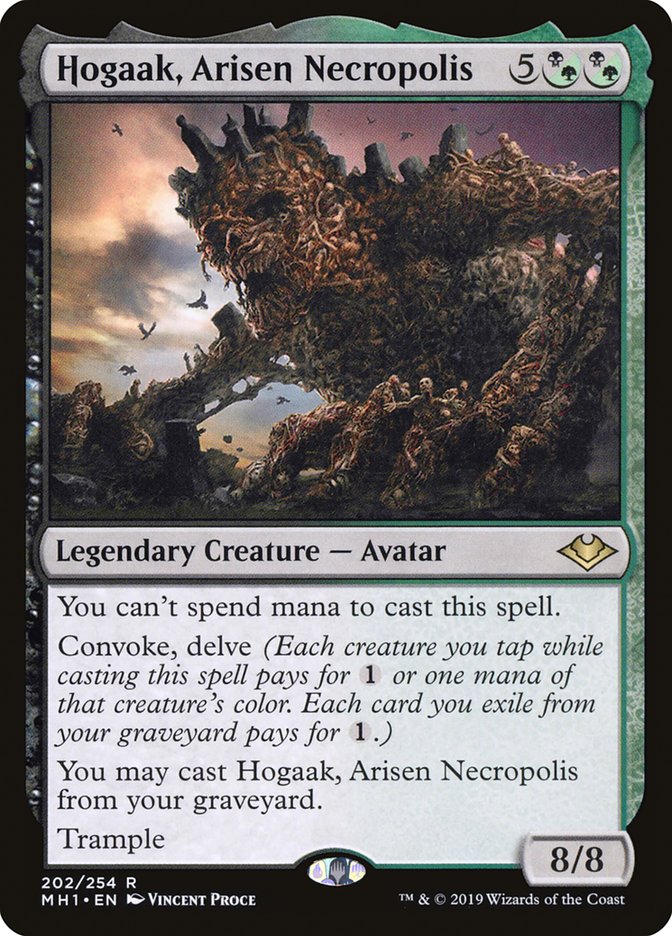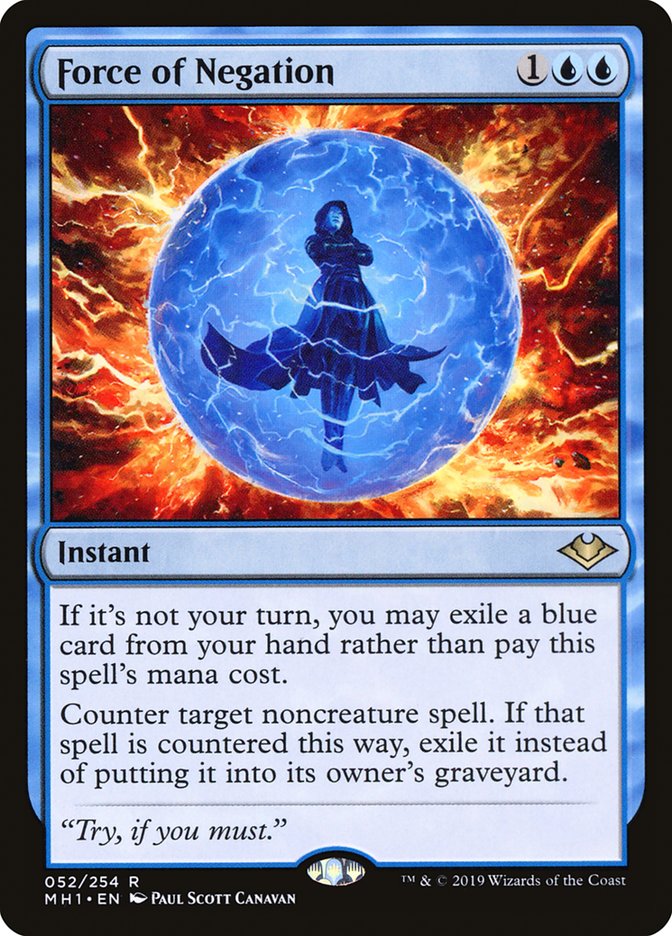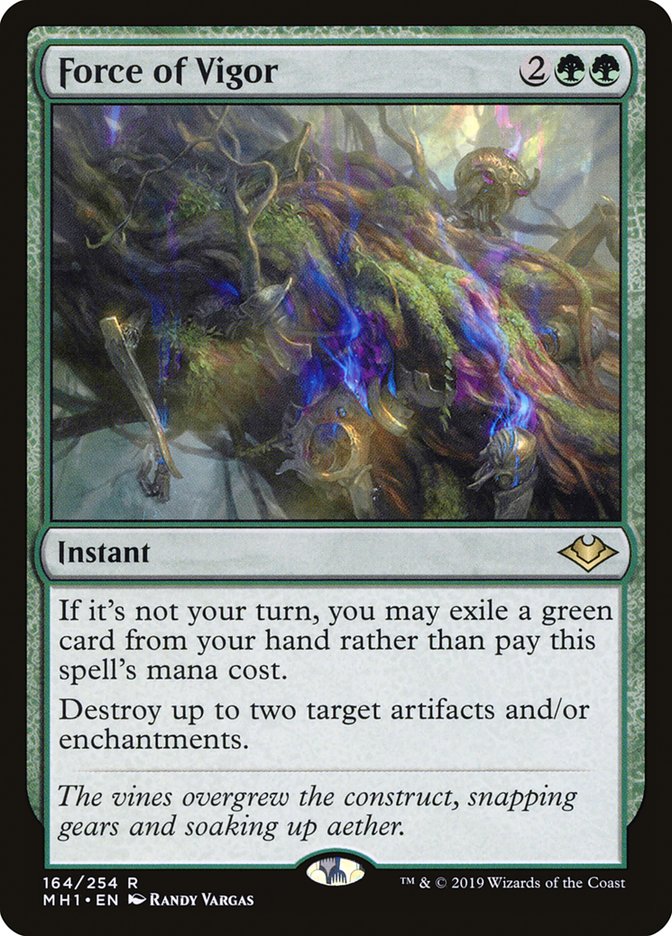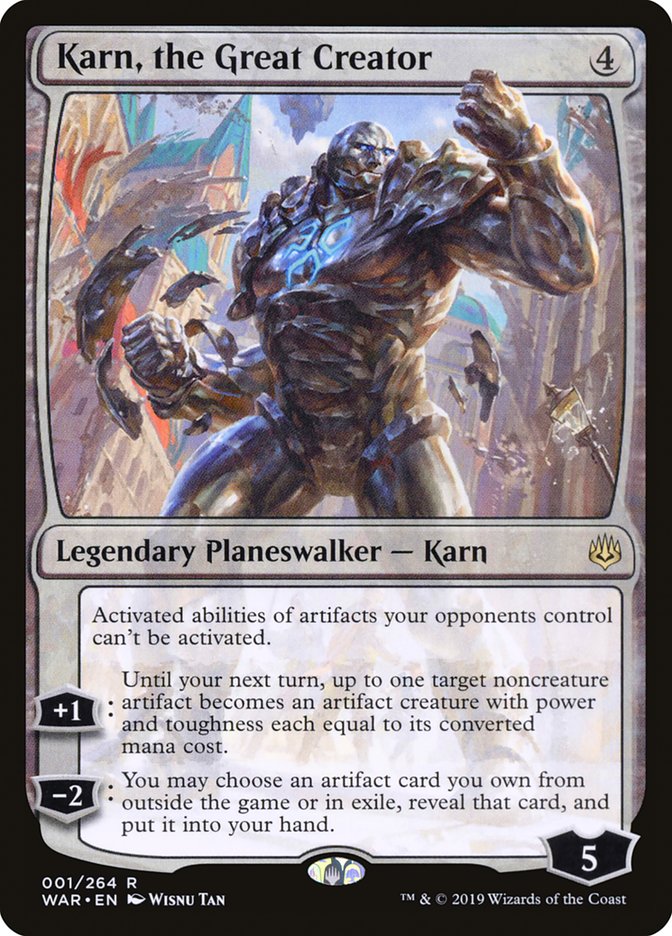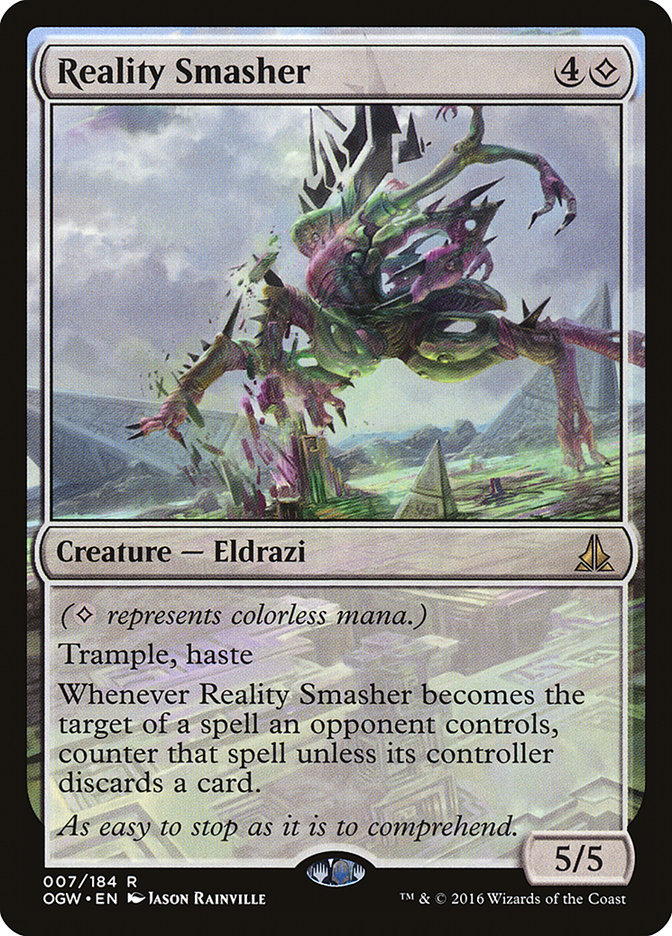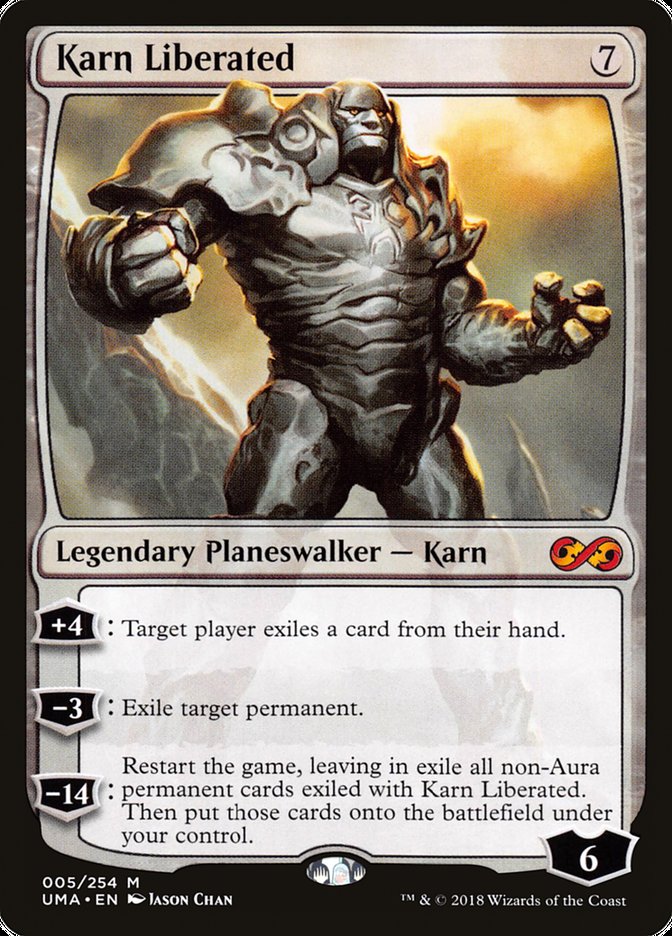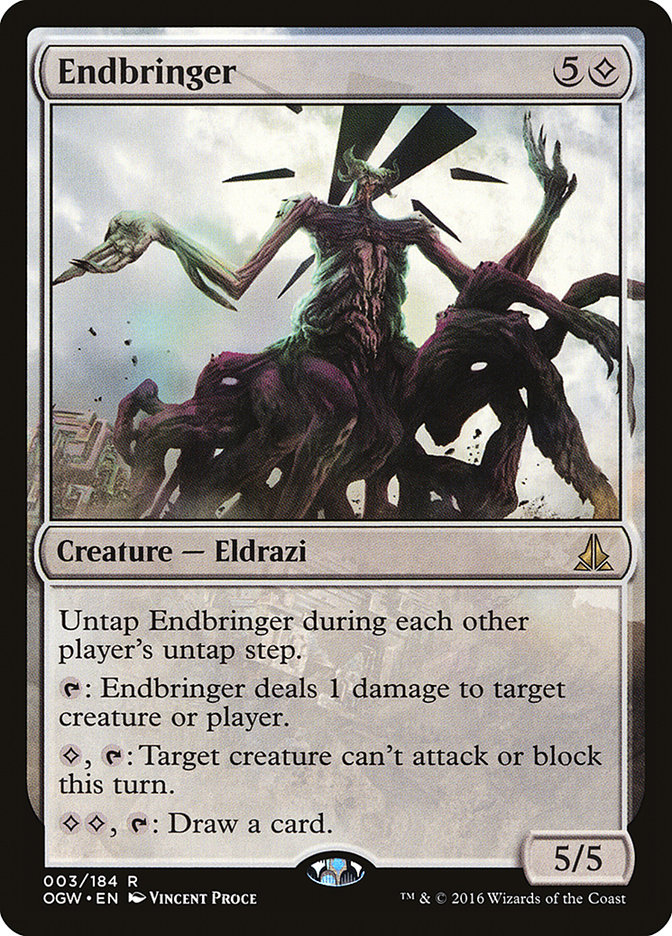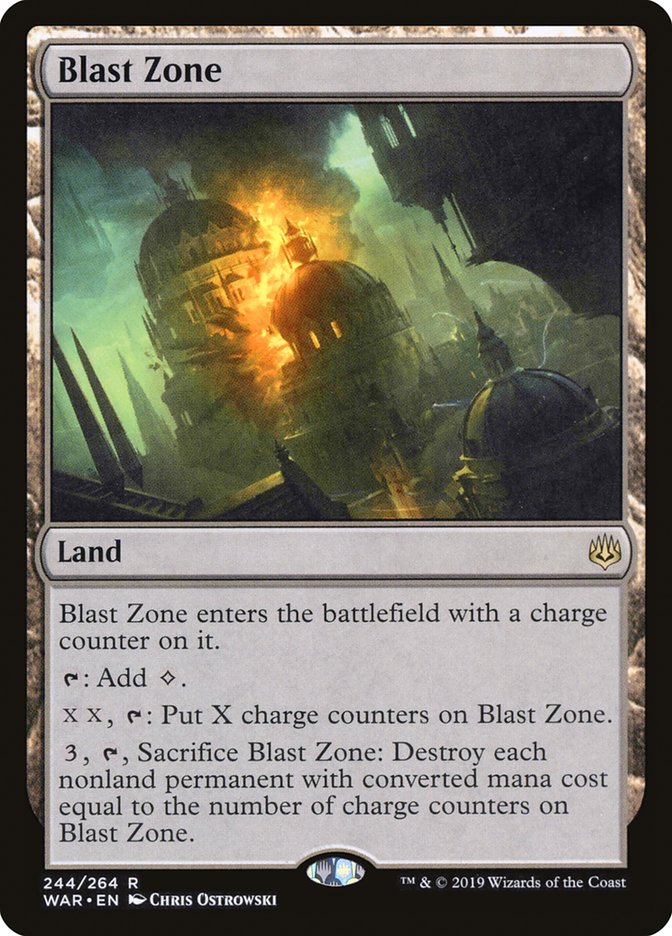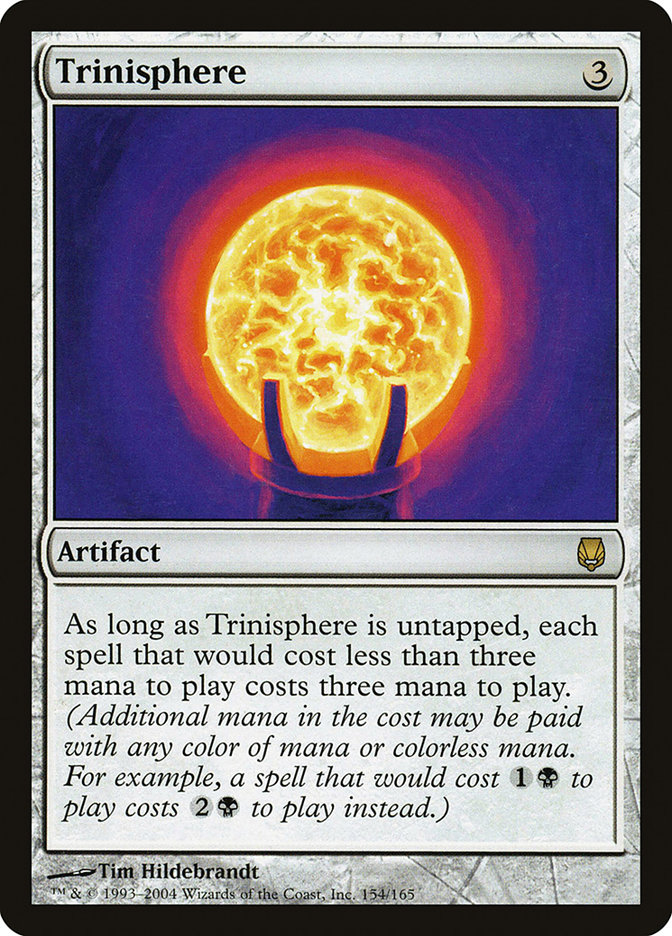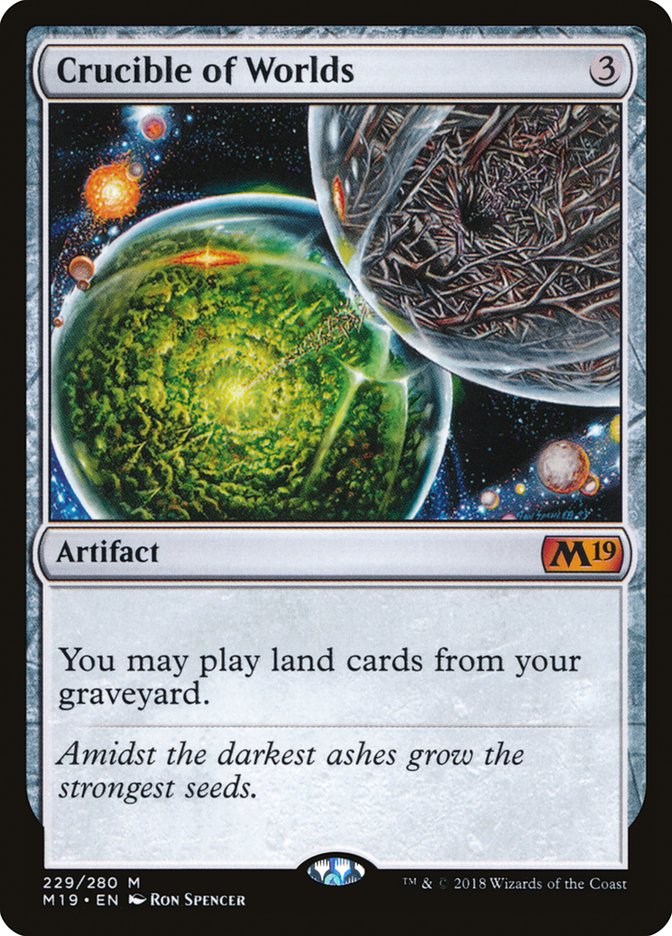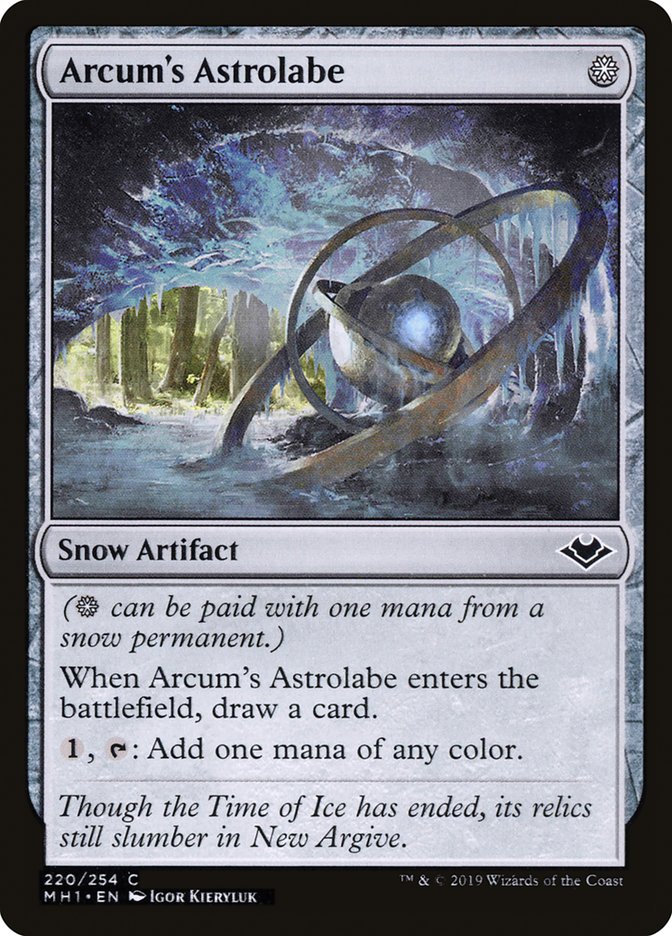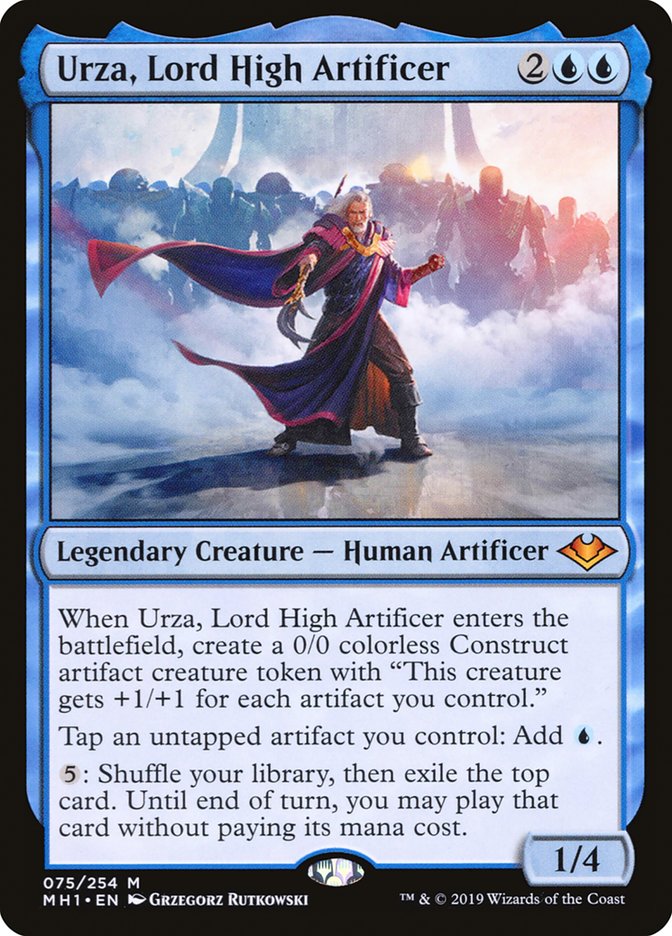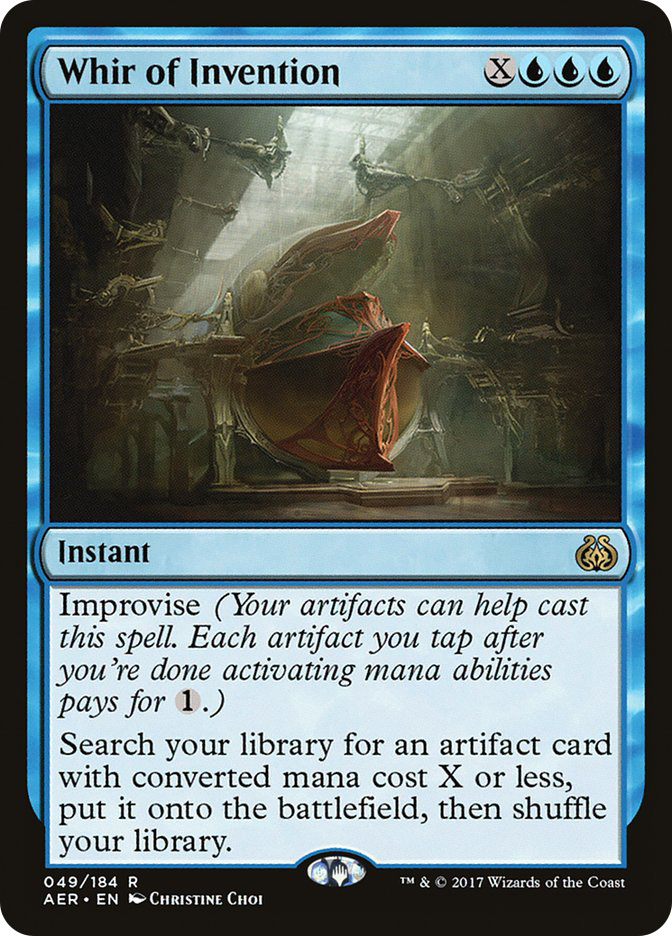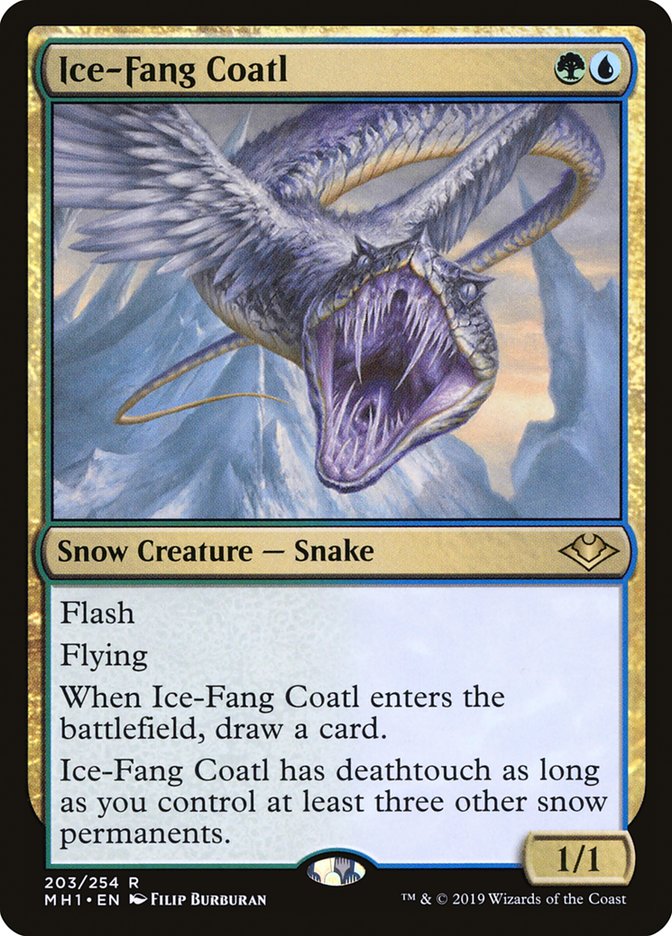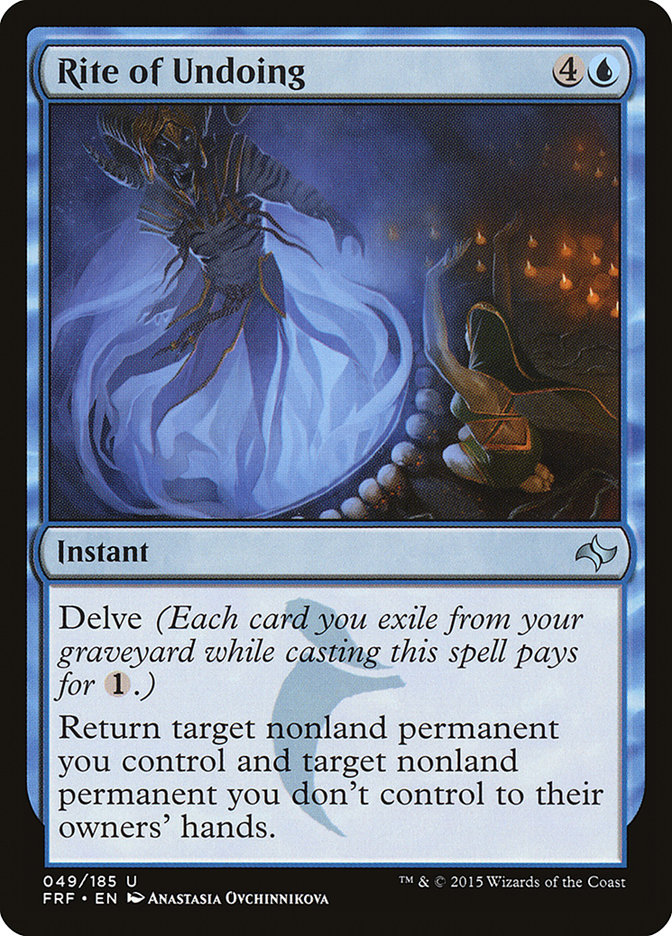Hogaak was the big deal at Mythic Championship IV, but someone else can write that story. Hogaak, Arisen Necropolis is kinda like Eye of Ugin. It’s clearly overpowered, it won’t be around long, and talking about the specifics of it isn’t going to be useful once you are no longer allowed to cast Hogaak, Arisen Necropolis.
Actually, it’s worse than Eye of Ugin. With Eldrazi, at least the ways people tried to win were unique, even if they all still failed and weren’t just named “Leyline of Your Deck Doesn’t Work.”
So I’m going to ignore that deck and discuss everything else going on. That “everything else” in Modern is at a real high point. The threats and answers have actually started to balance out, and most matches are highly interactive and unique.
Here are the key points that took the format from a really bad place at Mythic Championship II to the format we are one card away from today.
Force to Be Reckoned With
Force of Negation is a giant game-changer. You can tap out and not die mid-game. You can lose the die roll and still do things early without dying.
There are many individual ways that Force impacts established matchups, but the important thing is basically every deck bottlenecked by a spell cast has to consider what is next if it fails against a fair deck.
Does your Ensnaring Bridge deck want a second copy in the sideboard in case you cast the first, it gets exiled, and you need a second?
Does Dredge want to trim Cathartic Reunion in sideboarding to mitigate the resource risk associated with it getting countered, like it does against Spell Pierce? Is Lightning Axe now absurdly important to cover for Conflagrate missing Thing in the Ice?
Force of Negation’s mana cost is very reasonable, unlike Force of Will in Legacy, so the usual issues with the card in attrition situations don’t apply. I wouldn’t want a ton against Jund as Azorius Control, but I would want some to cover horribly-timed Thoughtseizes or fast planeswalkers while still being fine past Turn 2.
Seriously, the most-game changing card in Azorius mirrors is now a creature. Like, a generic creature with power and toughness and not any specific one. Because that’s the card that dodges any counterspell fights over planeswalkers that aren’t clearly determinable via mana counts.
These are all the things people complain about in Modern being fixed by one card, without any of the bad parts of Force of Will. You have to work hard to use Force of Negation to protect a combo, casting creatures is good, and linear decks have to build to play games where they take more actions.
My only complaint is Force of Negation? The card is really good against a bunch of the decks I want to put it in that aren’t Azorius Control or Izzet Phoenix. That, and I can see a world where this card is the one that makes me stop bashing Merfolk or Mono-Blue Tron.
On the flip side, Force of Vigor promises to make the format more degenerate. The “obvious” use is to put Affinity in the dumpster, and while I said I wouldn’t go on about Hogaak, the best Hogaak deck probably sideboards three or four of that card. That’s a scary precedent.
Force of Vigor solves two very scary problems for graveyard decks: what happens if they have two Leyline of the Void, and what happens if they have two unique hate cards. Doesn’t matter, double Naturalize covers you. This isn’t exclusive to graveyard decks either. The first deck I put Force of Vigor in was Amulet Titan trying to cover Blood Moon.
Mixing up your hate with bears like Yixilid Jailer will get even more important, because the traditional artifacts and enchantments can now add up to a liability more than a lock.
The Colorless Spectrum
One of the big research areas of this Mythic Championship was trying to define what the different colorless decks were doing that made them uniquely good in a given metagame.
One clear dial on this tuning was pseudo-mirrors, and how Karn, the Great Creator was both a threat these decks could play and probably the best hate card they could play against each other. This theme of a one-sided hate card creating a sub-metagame within a meta sector occurs a lot in Modern, with the Dredge / Hollow One / Leyline of the Void sub-meta a year ago being the immediate one that pops into my head. There are even smaller disparities that can cause this, like Lightning Bolt in Jeskai Control versus Azorius Control.
In the case of Karn, the Great Creator, there’s both the question of playing the card and the question of to what degree your colorless deck can partially function under Karn. Cards that still have game text are nice, but honestly just power and toughness is what matters when fighting their Karns.
Somehow, despite being disgustingly overpowered and miserable in other formats, the War of the Spark planeswalkers have made Modern a better format. They uniquely shut down the unfair decks that ignore the battlefield, promoting hybrid fair-unfair decks that slow the format down. To rework a Patrick Sullivan favorite, if your pushed cards are three- and four-mana cards that don’t instantly win the game, you’re likely safe for Modern.
It’s super-obvious Eldrazi Tron sits at the top of the Karn-resilience heap due to it having many nonartifact creatures (and the deck is also among the most resilient to Force of Negation and Force of Vigor) but a couple of specifics are worth discussing.
Like the Mono-Green Tron versus Eldrazi Tron matchup. Even if Eldrazi Tron hits the lucky fast Tron, making some Eldrazi loses the heads-up to Mono-Green Tron’s Oblivion Stone or Wurmcoil Engine. You just have to play Eldrazi Tron as a Death and Taxes deck that bridges to a Liquimetal Coating lock or Reality Smasher quick kill. Worry more about fast disruption, and then turn the corner to a clock. Expedition Map needs to find Ghost Quarter. A fast Chalice of the Void on one will often halt their rebuild. A Thought-Knot Seer can stymie threats from a mulligan, and Karn, the Great Creator turns off half of Mono-Green Tron’s spells. Play that half of your deck and things look close.
Creatures (17)
Planeswalkers (4)
Lands (24)
Spells (15)

Commenting on my Mythic Championship Eldrazi Tron list is probably also worth a minute. There’s not a ton that’s outside stock range, but I have some strong opinions. I’ll quick-hits it, since the deck is largely just stock.
- Ugin, the Ineffable only wins games when you have Tron mana for it and cast other threats. Why didn’t you just play the other threats?
- Endbringer isn’t insane, but it is castable off Eldrazi Temple and covers some unique stuff like Wurmcoil Engine.
- Cavern of Souls is bad. Azorius Control wants to exile your creatures and counter other stuff and they will Field of Ruin Cavern if it matters. You get one Thought-Knot Seer trigger on a good day.
- A third Wastes would actually help against Azorius Control or Wrenn and Six plus Ghost Quarter.
- Gemstone Caverns … it’s just cool.
- Scavenger Grounds is too slow against Hogaak. Try again later.
The fast Karn, the Great Creator sideboard breakdown:
- Crucible of Worlds doesn’t do anything. Don’t play it.
- Mystic Forge is the value card Crucible wishes it was, is good to find when Karn might get killed versus midrange, and can always swap in for a dead maindeck card elsewhere.
- Wurmcoil Engine is the card I’m interested in trying more, for similar reasons to Mystic Forge.
- Basilisk Collar does things in mirrors, but I struggle to see where you want it over a different lock piece.
- Darksteel Citadel lets you bridge Eldrazi Temple hands to Mycosynth Lattice. It is most important against Tron.
- Trinisphere immediately locks combo decks when you cast Karn with Tron mana and covers all of Izzet Phoenix’s threats, including Aria of Flame.
- The sideboard guide is to always leave Ensnaring Bridge, Mycosynth Lattice, and Liquimetal Coating on the sidelines, cut the totally dead cards given the matchup, and then fill up with tutor targets you wouldn’t mind drawing.
- The reason you leave targets in the sideboard is if they are only good with Karn, the Great Creator, or if you specifically expect to Karn for them off Tron mana as an instant win.
- If you need to sideboard in cards but don’t have totally dead stuff, look at Matter Reshaper and Endbringer.
The other interesting topic is finding the right Prison-ish archetype. In Modern’s recent history this has largely been about what lock core you want, but the decision point now is what high-end you want with a choice of Chalice of the Void or Arcum’s Astrolabe.
The Chalice question is the easier one to outline, but it’s harder to answer which is correct. Arcum’s Astrolabe’s biggest payoff isn’t actually the fixing, since playing it means cutting Spire of Industry for basic lands, but the velocity a cantrip artifact provides. You set up for Urza, Lord High Artificer and Whir of Invention by dumping card-neutral cardboard on the battlefield, as well as having fewer true dead draws if light disruption strips your first threat. If your payoffs are exactly those two cards, Astrolabe makes sense even if Chalice of the Void is kinda absurd. The small bonus mode of Astrolabe is combating Blood Moon if that resurges and cuts off Whir of Invention, or just playing your own sideboard Blood Moons.
The “choose two threats” conundrum is a bit more complicated. Each pairing of Urza, Lord High Artificer; Whir of Invention; and Karn, the Great Creator offers a unique set of strengths and weaknesses.
Creatures (8)
Lands (20)
Spells (32)

Urza plus Whir is the obvious Thopter Combo deck we frequently see. I’m not sure it has to be that, but it obviously makes sense or the deck wouldn’t be as successful as it currently is.
This deck is very good at producing Thopter Foundry plus Sword of the Meek, or just Ensnaring Bridge, but it’s limited to about that. There’s a fairly large swath of decks in Modern that exist in the overlap of “can beat Ensnaring Bridge and flying tokens” and “kill faster than a Turn 4 or Turn 5 infinite combo.” Thopter Combo has succeeded in a metagame artificially narrowed by Hogaak, but after that deck disappears I expect the true Prison decks to gain on it. The main non-Hogaak thing this deck has going for it is the Azorius Control matchup is merely bad and not the true disaster matchup less threat-heavy artifact decks face.
Planeswalkers (4)
Lands (21)
Spells (35)

Whir plus Karn is the latest version of susurrus_mtg’s Whir Prison deck. If you’ve played the deck before, not much has changed. Karn, the Great Creator offers a fast and clean hard lock against the Shatterstorms that plagued previous versions, and your sideboard was already a singleton artifact toolbox, so the deckbuilding cost of the planeswalker is low. You are always winning via stranglehold, though, so the opposing combo of clock plus non-Chalice locked disruption often leads to very close games.
The post-lock kill is also extremely tedious on Magic Online if they make you do it, but feasible if you go down the route of Blast Zone recursion to clear all their stuff and then your Ensnaring Bridges before attacking with Mycosynth Lattice. The Academy Ruins decking end-game is dicey on time, and don’t forget to Welding Jar your important cards if Blast Zone would hit them.
Creatures (7)
Planeswalkers (3)
Lands (20)
Spells (30)

Karn plus Urza is the duo we haven’t seen much of in the wild, but my teammate Corey Burkhart registered a list of this for the Mythic Championship. The deck is much more on the Whir Prison side of things, using Chalice of the Void to cover a lot of gaps the Thopter Combo deck has. Urza, Lord High Artificer and the Thopter-Sword combo play the role of hammers that let you win games where Whir Prison wouldn’t quite get its puzzle assembled.
The problem with this deck is that its flexibility also makes it the least cohesive of the bunch. You are more likely to be short an artifact for Mox Opal or Urza, short a turn to Ensnaring Bridge going through Goblin Engineer over Whir of Invention, just short something for anything. To me that is super-promising because it points to a numbers issue more than a fundamental gap in capability. Or maybe that the Whir Prison deck should be playing Goblin Engineer with a splash of Thopter-Sword combo.
Yeah, that’s probably the next thing I need to figure out. Also where I missed my chance to reference the Urza’s Legacy Time Streams novel, given the Urza-Karn team-up in cardboard 20 years later.
And Much, Much More
So you have a format that has every deck becoming more creature-centric, worrying about resiliency, and with tons of infighting among linear archetypes.
I made fun of a lot of cards in Modern Horizons for failing the tests of Modern as they existed three months ago, but there are now way more things catching my eye.
Ice-Fang Coatl is one of those cards. It is unique in its colors as removal, and unique as a cantrip removal spell in the format. We saw some of the latter use with SnowShift recently, but here’s another shell reverse-engineered from the Magic Online Leagues.
Creatures (7)
Planeswalkers (2)
Lands (25)
Spells (26)

The premise is similar to SnowShift, minus the whole “sorcery speed and messed-up mana” aspect. If you haven’t seen the Modern Wilderness Reclamation deck in action, the end-game is slightly different from in Standard. Instead of looping turns to get deep digs for another Nexus of Fate, Nexus is largely an end state you reach after a looped Blue Sun’s Zenith draws your entire deck.
One of the things that impressed me a ton in the match I played versus this archetype was utilizing the bounce mode of various spells with your high density of enters-the-battlefield effects. Admittedly that list had Rite of Undoing, whereas Cryptic Commanding your own Ice-Fang Coatl makes no sense, but when you have lots of mana and bounce Snapcaster Mage, things go pretty well. Narset, Parter of Veils is here based on this self-bounce plan, derived from how insane the Callous Dismissal plus Narset interaction was in War of the Spark draft. Cryptic Command can only be better, right? The original list I’m cribbing had Rite of Undoing, which just seems too awesome to actually be good.
You can see some concerns I have in the flex slots. Wrenn and Six and Teferi, Time Raveler need to die, and the last couple of removal spells try to cover that. The removal name spread also helps with Meddling Mage. There are fewer Arcum’s Astrolabes to avoid their Narset, Parter of Veils.
I haven’t played enough with the deck to know if you need a recursion effect or what the right one is. They could nab Blue Sun’s Zenith with Thoughtseize and things get a bit difficult. A more normal win condition could do similar work, but I’m also unsure what that would be.
Also, that Hogaak thing. I mean, you could just play Leyline of the Void over the current graveyard hate, throw in a couple more pieces of hate to be really sure, and…
Or you could just accept that Hogaak will pass, and that’s when the waiting wonders of Modern Horizons Modern will be fully explored.


